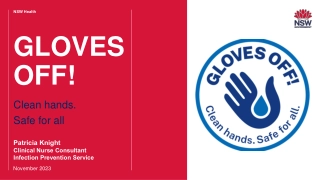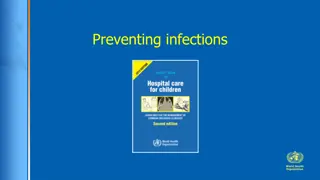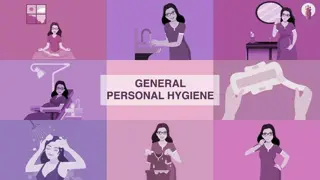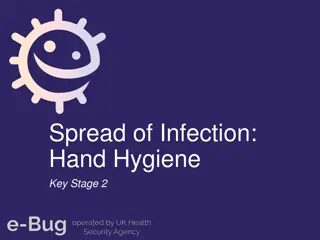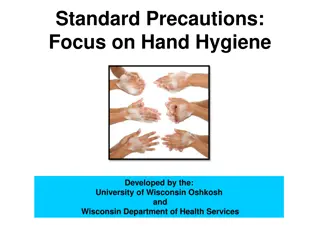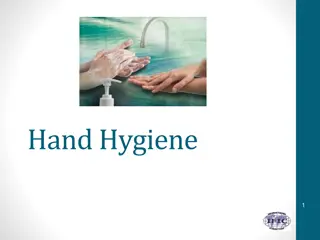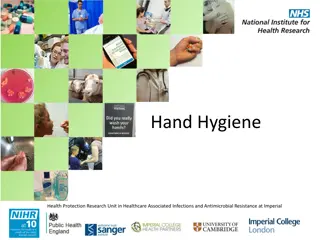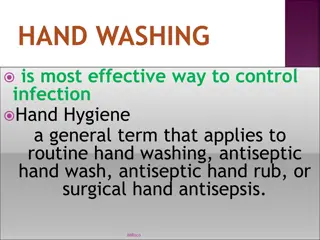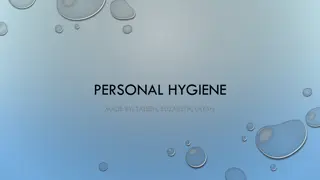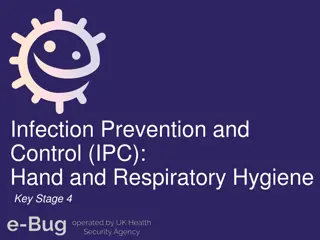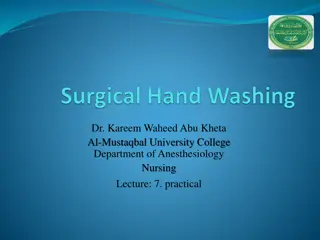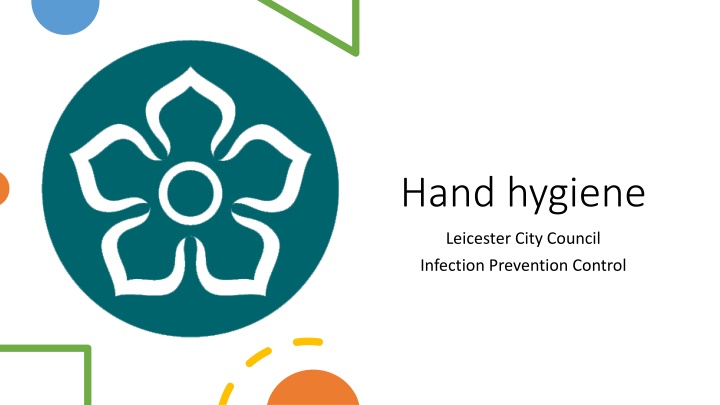
Effective Hand Hygiene Practices for Infection Prevention in Care Homes
Implementing good hand hygiene practices significantly reduces healthcare-associated infections in care homes. This comprehensive guide covers the importance of hand hygiene, proper hand washing techniques, the use of soap and water, and how to maintain clean nails and hands. Valuable resources from the Royal College of Nursing are provided to support and promote optimal hand hygiene practices in care home settings.
Download Presentation

Please find below an Image/Link to download the presentation.
The content on the website is provided AS IS for your information and personal use only. It may not be sold, licensed, or shared on other websites without obtaining consent from the author. If you encounter any issues during the download, it is possible that the publisher has removed the file from their server.
You are allowed to download the files provided on this website for personal or commercial use, subject to the condition that they are used lawfully. All files are the property of their respective owners.
The content on the website is provided AS IS for your information and personal use only. It may not be sold, licensed, or shared on other websites without obtaining consent from the author.
E N D
Presentation Transcript
Hand hygiene Leicester City Council Infection Prevention Control
Good hand hygiene reduces the risk of transmitting infections. Key message The evidence supports this: improving hand hygiene significantly reduces the number of health care associated infections (HCAIs) in care homes (Loveday et al., 2014). Hands may look clean but removal of invisible micro-organisms by hand-washing is the most important factor in preventing them from being transferred to other people.
Soap and water Soap and water is the best way to clean hands. It should always be performed when hands are visibly dirty, or you are dealing with GI infections (like norovirus or C.difficile). Types of hand washing Hand sanitisers (alcohol gels) Alcohol is effective at destroying micro- organisms on socially clean hands i.e., hands that have not touched any obvious source of contamination. However, it is not a cleaning agent, and not effective in all circumstances (Pittet et al 2009). Don t use hand sanitisers when hands are visibly dirty, or you are dealing with GI infections (like norovirus or C.difficile).
When to wash your hands
How to wash your hands
Keep nails short, clean and polish free Don t wear artificial nails or extensions Avoid wearing wrist watches or jewellery Avoid rings with ridges or stones Cover any cuts with a waterproof plaster or dressing Report any skin conditions affecting the hands (Royal College of Nursing., 2022) How to support good hand hygiene
Resources Essential Practice for Infection Prevention and Control| Royal College of Nursing (rcn.org.uk) Essential Practice for Infection Prevention and Control| Royal College of Nursing (rcn.org.uk) Essential Practice for Infection Prevention and Control| Royal College of Nursing (rcn.org.uk) Your 5 moments for hand hygiene for Care Homes Poster - Infection Prevention Control Your 5 moments for hand hygiene for Care Homes Poster - Infection Prevention Control Your 5 moments for hand hygiene for Care Homes Poster - Infection Prevention Control Hand hygiene Policy for Care Home settings - Infection Prevention Control Hand hygiene Policy for Care Home settings - Infection Prevention Control The hand washing challenge - Signature Care Homes (signature-care-homes.co.uk) The hand washing challenge - Signature Care Homes (signature-care-homes.co.uk) Infection prevention.pdf (nice.org.uk) Infection prevention.pdf (nice.org.uk)
Loveday HP, Wilson JA, Pratt RJ, Golsorkhi M, Tingle A, Bak A, Browne J, Prieto J and Wilcox M (2014) epic3: National Evidence-Based Guidelines for Preventing Healthcare-associated Infections in NHS Hospitals in England, Journal of Hospital Infection, 86S1, S1 S70 References Pittet D, Allegranzi B and Joyce J (2009) The World Health Organization Guidelines on Hand Hygiene in Health Care and Their Consensus Recommendations, Infection Control Hospital Epidemiology, 30, 611 622.

